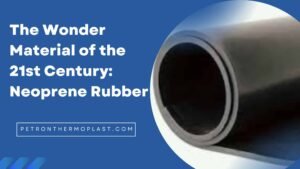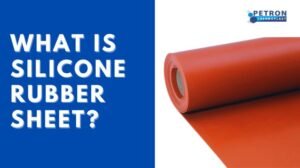Introduction
PVDF membrane are an essential component in various industries, offering a wide range of applications. From water treatment to medical devices, PVDF membranes have proven to be versatile and effective. In this blog post, we will explore the characteristics, uses, and benefits of PVDF membranes, shedding light on why they are highly regarded in the industry.
Understanding PVDF Membrane
PVDF membrane is a porous material used for filtration and separation processes. It is made from PVDF, a synthetic polymer known for its exceptional chemical resistance, high thermal stability, and mechanical strength. PVDF membranes are engineered to have specific pore sizes, allowing them to selectively retain particles or molecules while allowing the passage of others.
Composition and Structure of PVDF Membrane
PVDF membranes are typically composed of a homopolymer of vinylidene difluoride, which is produced through the polymerization of PVDF. The resulting material is a highly crystalline, semi-crystalline, or amorphous structure. The membrane is manufactured through a phase inversion process, where the polymer solution is cast, and the solvent is removed, leaving behind a porous structure.
Properties of PVDF Membrane
PVDF membranes possess several desirable properties that make them suitable for various applications:
1. Chemical Resistance:
PVDF membranes exhibit excellent resistance to a wide range of chemicals, including acids, bases, and organic solvents. This property ensures the membrane’s longevity and stability, even in harsh environments.
2. Thermal Stability:
PVDF membranes can withstand high temperatures, making them suitable for applications requiring heat sterilization or processes involving elevated temperatures.
3. Mechanical Strength:
PVDF membranes have high mechanical strength, enabling them to withstand high pressures and mechanical stress without compromising their filtration efficiency.
4. Hydrophobicity:
PVDF membranes are inherently hydrophobic, repelling water and allowing for easier removal of retained substances during filtration processes.
5. Pore Size Control:
PVDF membranes can be engineered with precise pore sizes, ranging from microfiltration to ultrafiltration, allowing for selective separation based on particle or molecule size.
Applications of PVDF Membrane
1. Water Treatment:
PVDF membranes are widely used in water treatment processes such as microfiltration, ultrafiltration, and reverse osmosis. They effectively remove suspended solids, bacteria, viruses, and other contaminants from water, ensuring clean and safe drinking water.
2. Biopharmaceutical Industry:
PVDF membranes find extensive use in the biopharmaceutical industry for sterile filtration, virus removal, and protein concentration. They play a crucial role in ensuring the purity and safety of pharmaceutical products.
3. Food and Beverage Industry:
PVDF membranes are employed in the food and beverage industry for various filtration processes, including the removal of particles, clarification, and sterilization. They help maintain product quality, prolong shelf life, and ensure food safety.
4. Electronics and Semiconductor Industry:
PVDF membranes are utilized in the electronics and semiconductor industry for particle filtration and the removal of contaminants from process liquids. They assist in maintaining the purity of chemicals and fluids used in manufacturing processes.
Advantages of PVDF Membrane
PVDF membranes offer numerous advantages over other filtration materials, including:
1. Wide Chemical Compatibility:
PVDF membranes are compatible with a broad range of chemicals, enabling their use in diverse industrial processes.
2. Longevity and Durability:
PVDF membranes have excellent mechanical strength and chemical resistance, allowing for extended service life and increased durability.
3. High Filtration Efficiency:
The precisely controlled pore size of PVDF membranes ensures high filtration efficiency and consistent performance.
4. Easy Cleanability:
PVDF membranes can be easily cleaned and regenerated, resulting in cost savings and improved operational efficiency.
5. Compatibility with Sterilization Methods:
PVDF membranes can withstand various sterilization methods, including autoclaving, steam sterilization, and chemical sterilization.
PVDF Sheet: A Versatile Material Derived from PVDF Membrane
PVDF membranes also serve as the foundation for PVDF sheet, which are widely used in construction, chemical processing, electrical insulation, and other industries. PVDF sheets inherit the excellent chemical resistance, UV stability, and flame retardancy of PVDF membranes, making them an ideal material for demanding applications.
End-note
PVDF membranes are critical components in filtration and separation processes across various industries. Their exceptional properties, such as chemical resistance, thermal stability, and mechanical strength, make them highly suitable for applications ranging from water treatment to biopharmaceutical production. Additionally, the derived PVDF sheets offer versatility and durability for numerous industrial applications. As the industry continues to advance, PVDF membranes and sheets will undoubtedly play a crucial role in meeting the evolving demands of filtration, separation, and material requirements. With their superior performance and wide range of applications, PVDF membranes are a reliable choice for achieving efficient and reliable filtration processes.
You may also like – PEEK Plastic Material | CNC Machined Components | PVDF Pipe
FAQs:
Q. Why do we use PVDF membrane in Western blotting?
PVDF membranes are commonly used in Western blotting due to their high protein binding capacity, chemical resistance, and low background noise. They provide efficient transfer and retention of proteins, making them suitable for various applications in protein analysis.
Q. What material is PVDF?
PVDF stands for polyvinylidene fluoride. It is a high-performance thermoplastic polymer known for its excellent chemical resistance, durability, and UV stability. PVDF is commonly used in industries such as construction, aerospace, electronics, and automotive due to its unique properties.
Q. Why do we use PVDF membrane?
PVDF membranes are used for various applications due to their exceptional chemical compatibility, thermal stability, and high protein binding capacity. They provide efficient filtration, are resistant to organic solvents, and offer low protein adsorption, making them ideal for protein analysis and other biological research.
Q. What are the properties of PVDF membrane?
PVDF (Polyvinylidene fluoride) membranes are known for their excellent chemical resistance, hydrophobicity, and low protein binding. They offer high mechanical strength, thermal stability, and are commonly used in applications such as filtration, protein separation, and transfer of nucleic acids.





Pingback: ข้อดี ของการเลือกแทง หวย keno
Pingback: https://stealthex.io
Pingback: ทดลองเล่นสล็อต ฟรี
Pingback: فروش کارت تلفن بین المللی
Pingback: รับทำ Work Permit
Pingback: https://asesorati.com/2025/03/19/soft2bet-amplia-su-visibilidad-europea-con-el-3/
Pingback: ufa789